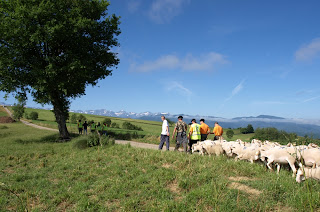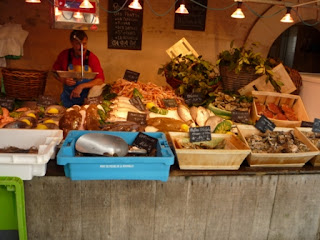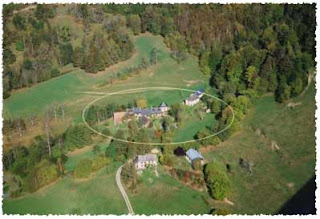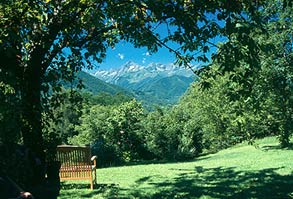In the next couple of weeks I will be allowing extra time when out on property searches and viewings in the high valleys of the Pyrenees. At this time of year roads and even whole villages are likely to be closed at certain times to accommodate one of the great cultural traditions of this part of the Ariège; the transhumance or literally ‘the seasonal movement of livestock,’ a practice which dates from at least the Middle Ages.
This happens twice a year and takes on epic proportions when the animals from the farms on the valley plains are herded up to the high mountain pastures to spend the summer months in freedom. In October it is the opposite procedure with the descent back down from the mountains to the valleys for the winter. The numbers are impressive – in the Ariège over 12,000 cattle, 40,000 sheep and over 1,000 horses make this annual pilgrimage to higher pastures. This is why, when walking the mountain trails and passes around here in the summer, the hills are alive with the sound of bells; you will often come across groups of Merens, the local breed of horse, a bell around the neck of the leader, free to wander where they please, or cows similarly oblivious to the gentle chiming they make with every move. Likewise, you will find herds of sheep seemingly quite alone but actually guarded by the beautiful white dogs of the Pyrenees, the Patou, who stay with the animals and protect them from attack or harm.
The journey from valley to mountain with the herds of animals during the transhumance can take several days and takes on a holiday atmosphere with many members of the villages and surrounding farms helping out and camping together each night. The whole event has become a friendly social gathering and walkers are always welcome to join the farmers as they move their animals. Many have no experience of farming but take part in order to encounter a way of life still so firmly rooted in tradition and something that probably most of us imagined had died out centuries ago.
For me, the most dramatic procession from a spectator’s point of view is the troupe of 200 or so Merans horses (the local breed) making the journey from their fields in St Lizier through the narrow streets of the towns and villages and then slowly up the mountain roads, expertly herded by a few brave souls whose main means of controlling them seems to be a frantic waving of arms. It’s certainly not a sight that you see every day and a perfect illustration of the enduring and unchanging way of life here in the foothills of the French Pyrenees – and certainly a more entertaining way to be delayed on the way to work than heavy traffic on the M25.














